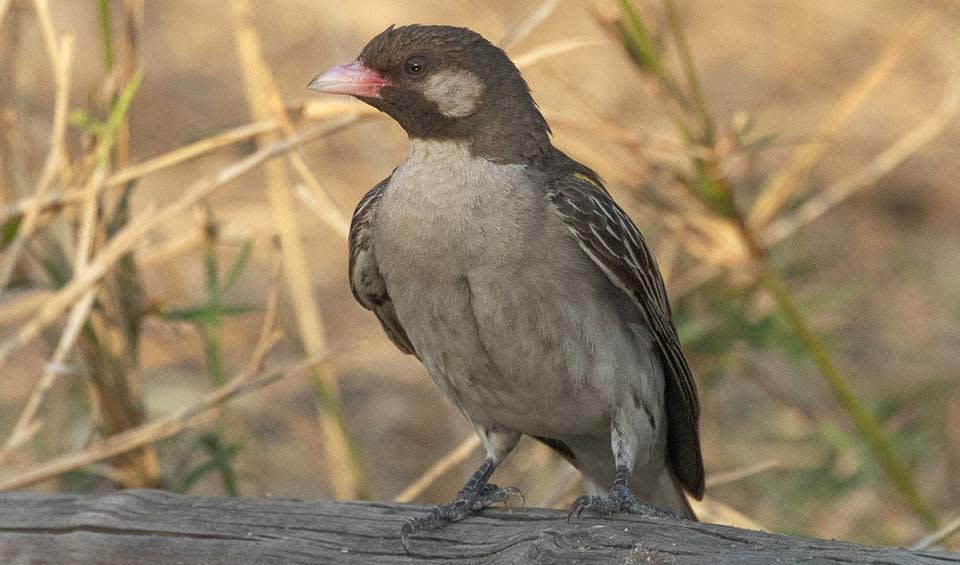Renowned for its unique behavior of leading humans to bee hives, both its scientific and English names reflect this remarkable trait. While its guiding behavior towards humans is well-documented, there is ongoing debate regarding whether it also directs other non-human creatures to bee colonies.
Native to Sub-Saharan Africa, the Greater Honeyguide is a resident breeder in the region. It occupies a variety of tree-rich habitats, including dry open woodlands, savannas, and scrublands. However, it typically avoids dense rainforests found in West Africa.
The male Greater Honeyguide exhibits striking plumage, with a black neck and dark grey-brown upperparts contrasted by white underparts. Its wings feature distinct whitish streaks, along with a conspicuous golden shoulder patch. The bill of the male is notable for its pink coloration. In contrast, the female has a comparatively duller appearance, lacking the black throat seen in males, and her bill is dark in color. Juvenile birds display olive-brown upperparts, a white rump, and a yellow neck and upper breast, making them easily distinguishable from adults.
In addition to its visually striking features, the Greater Honeyguide plays a vital ecological role as a mutualistic partner with humans. By leading them to bee hives, it facilitates the harvest of honey, while also benefiting from the leftover beeswax and bee larvae. This unique relationship underscores the complex interactions between humans and wildlife in African ecosystems.
Despite its fascinating behavior and ecological significance, the Greater Honeyguide faces various threats to its survival, including habitat loss, deforestation, and unsustainable beekeeping practices.
Distribution
 Angola
Angola Benin
Benin Botswana
Botswana Burkina Faso
Burkina Faso Burundi
Burundi Cameroon
Cameroon Central Af. Rep.
Central Af. Rep. Chad
Chad Congo-Brazzaville
Congo-Brazzaville Côte D’ivoire
Côte D’ivoire DR Congo (Kinshasa)
DR Congo (Kinshasa) Eritrea
Eritrea Eswatini
Eswatini Ethiopia
Ethiopia Gabon
Gabon Gambia
Gambia Ghana
Ghana Guinea-Bissau
Guinea-Bissau Guinea
Guinea Kenya
Kenya Lesotho
Lesotho Liberia
Liberia Malawi
Malawi Mali
Mali Mauritania
Mauritania Mozambique
Mozambique Namibia
Namibia Niger
Niger Nigeria
Nigeria Rwanda
Rwanda Senegal
Senegal Sierra Leone
Sierra Leone Somalia
Somalia South Africa
South Africa South Sudan
South Sudan Sudan
Sudan Tanzania
Tanzania Togo
Togo Uganda
Uganda Zambia
Zambia Zimbabwe
ZimbabweAnything we've missed?
Help us improve this page by suggesting edits. Glory never dies!
Suggest an editGet to know me
Terrestrial / Aquatic
Altricial / Precocial
Polygamous / Monogamous
Dimorphic (size) / Monomorphic
Active: Diurnal / Nocturnal
Social behavior: Solitary / Pack / Herd
Diet: Carnivore / Herbivore / Omnivore / Piscivorous / Insectivore
Migratory: Yes / No
Domesticated: Yes / No
Dangerous: Yes / No




